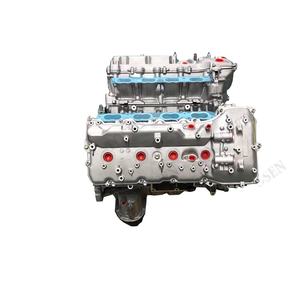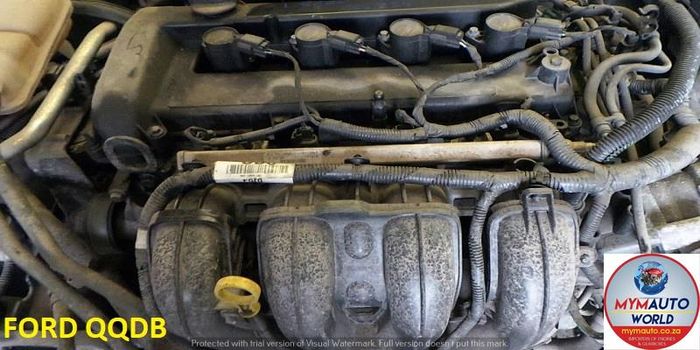Checking Out the Inner Workings of a Compact Lorry's Engine System
As vehicle drivers, we usually consider given the elaborate procedures that happen within the confines of our lorry's engine system. The small yet complex equipment that drives us ahead is a marvel of design precision and control. From the controlled surges in the combustion chamber to the thorough timing of gas injection, every part plays a critical function in the smooth procedure of the engine. In this exploration of a small car's engine system, we will unwind the internal workings of this mechanical harmony, shedding light on the mysteries that drive us forward on our daily journeys.
Burning Refine Summary
The burning procedure in a compact car's engine system is a vital device that efficiently converts gas right into power to power the vehicle. This process occurs within the combustion chamber of the engine, where fuel and air mix, stir up, and produce controlled explosions. The burning procedure contains 4 major phases: consumption, compression, exhaust, and power.
Throughout the consumption stage, the piston relocates downward, pulling in a combination of air and gas into the combustion chamber. The following phase, compression, entails the piston moving upwards, compressing the air-fuel mixture to boost its potency. Ultimately, in the power stage, the ignition system stirs up the compressed combination, leading to a quick expansion of gases that compels the piston back down. This down activity produces the power needed to drive the car. Ultimately, in the exhaust stage, the burnt gases are expelled from the burning chamber with the exhaust valve, preparing the chamber for the following cycle. This cyclic burning process is essential to the procedure of a portable car's engine system, ensuring effective power conversion for propulsion.
Piston and Cyndrical Tube Communication

The piston's exact fit within the cyndrical tube is essential for maintaining optimal compression and avoiding power loss throughout burning. Limited clearances in between the piston and cyndrical tube wall surfaces make sure effective securing, permitting the piston to relocate efficiently without enabling gases to leak past. Appropriate lubrication is likewise important to decrease friction and wear in between these elements, boosting longevity and performance.
In addition, the design and products utilized in manufacturing the piston and cyndrical tube effect engine efficiency and durability. Modern engines usually use lightweight yet sturdy products like light weight aluminum alloys for pistons and cyndrical tube liners to minimize inertia and enhance thermal performance. Generally, the unified communication between the piston and cyndrical tube is basic to the engine's functionality and total performance.
Gas Injection System Performance
Gas injection systems in portable vehicle engines play a crucial duty in specifically delivering gas to the combustion chamber for reliable and controlled ignition. The gas injection system works by injecting gas right into the combustion chamber at the ideal minute throughout the engine's procedure (opel corsa engine). This precise timing guarantees that the fuel blends uniformly with the air for proper burning, bring about boosted fuel efficiency and minimized exhausts
There are primarily two sorts of fuel shot systems used in compact car engines: port fuel injection (PFI) and direct fuel injection (DFI) PFI systems inject gas into the consumption port prior to the consumption shutoff, while DFI systems infuse gas directly into the combustion chamber. Both systems have their advantages, with DFI providing better fuel atomization and PFI offering a more cost-effective solution.
Understanding Engine Cooling Mechanisms
Efficient operation of a portable car's engine depends heavily on the efficiency of its cooling systems. Engine air conditioning is necessary to prevent overheating, which can result in major damage and lowered efficiency. The cooling system in a small car usually consists of several parts functioning with each other to control the engine temperature. One crucial component is the radiator, which utilizes coolant to absorb warmth from the engine. As the warm coolant moves with the radiator, it releases warmth into official source the air, cooling down prior to returning to the engine. The water pump distributes the coolant through the engine and radiator, ensuring a regular flow to regulate temperature. Additionally, the thermostat helps control the coolant circulation to preserve optimum engine temperature. Some cars additionally have cooling down followers that trigger when additional cooling is required, such as during hefty web traffic or heat. Comprehending these engine air conditioning mechanisms is crucial for keeping the performance and durability of a compact car's engine system.

Exhaust System Components Explained
The ideal performance of a portable lorry's engine cooling mechanisms depends upon a corresponding system referred to as the exhaust system, which consists of numerous important elements for making sure reliable discharges and engine efficiency. The exhaust system consists of parts such as the exhaust manifold, catalytic converter, muffler, and tailpipe. The exhaust manifold accumulates exhaust gases from the engine's cyndrical tubes and courses them to the catalytic converter. The catalytic converter then converts hazardous pollutants in the exhaust into less harmful emissions prior to launching them via the muffler and tailpipe.
One essential component of the exhaust system is the oxygen sensing unit, which keeps an eye on the oxygen levels in the exhaust gases to aid control fuel consumption and ensure optimum engine performance. opel corsa engine. In addition, the resonator might be present in some exhaust systems to lower sound levels. Overall, the exhaust system plays an essential read this post here function in maintaining engine effectiveness, decreasing harmful exhausts, and guaranteeing a quieter driving experience for compact lorry owners

Conclusion
In verdict, the compact automobile's engine system is a complex mix of elements that collaborate to assist in the burning process, transform gas into power, and expel waste gases. Comprehending the internal workings of the engine system, consisting of the piston and cyndrical tube interaction, fuel shot system, engine air conditioning systems, and exhaust system parts, is crucial for preserving ideal efficiency and performance of the car.
The burning procedure in a compact car's engine system is a critical system that effectively transforms gas right into power to power the vehicle.Fuel injection systems in compact vehicle engines play a crucial duty in specifically providing gas to the burning chamber for reliable and controlled ignition.There are mainly two types of fuel injection systems utilized in small automobile engines: port gas injection (PFI) and direct fuel injection (DFI) Comprehending these engine air conditioning systems is crucial for keeping the efficiency click to read more and durability of a small automobile's engine system.
The optimum performance of a small automobile's engine cooling systems depends on a complementary system known as the exhaust system, which comprises numerous important components for guaranteeing efficient emissions and engine efficiency.